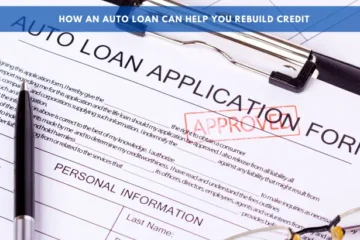In the dynamic landscape of personal finance, maintaining a healthy credit profile is essential. However, life’s unpredictability can lead to financial challenges, resulting in negative marks on your credit report. Fortunately, in Canada, comprehensive consumer protection laws safeguard individuals, guaranteeing fairness and transparency in credit reporting and repair processes. Transitioning into a discussion about these laws, this article will delve into the intricacies of credit repair. It will highlight the fundamental legal frameworks that Canadian consumers need to comprehend to navigate credit repair effectively, ensuring they can address any issues that may arise and maintain financial stability.
Understanding the Credit Reporting System in Canada
Before diving into consumer protection laws, it’s essential to grasp the functioning of Canada’s credit reporting system. Equifax and TransUnion, the nation’s primary credit reporting agencies, compile and manage individuals’ credit reports. These reports are constructed from data provided by creditors, lenders, and financial institutions. They encompass a broad spectrum of details, including credit history, outstanding debts, payment records, credit inquiries, and public records like bankruptcies or liens. Lenders utilize this data to evaluate your creditworthiness when you seek credit cards, loans, mortgages, or other financial products. Transitioning into the subsequent discussion, understanding this foundational aspect sets the stage for comprehending how consumer protection laws intersect with credit reporting practices.
The Importance of Consumer Protection Laws
Consumer protection laws are instrumental in guaranteeing equitable treatment from credit reporting agencies, creditors, and debt collectors. They delineate the rights and obligations of individuals, offering avenues to challenge inaccuracies on credit reports, rectify unjust debt collection tactics, and shield against identity theft and fraud. These laws serve as a safeguard for consumers, ensuring they are not unduly burdened by erroneous information or predatory practices in the financial realm. Transitioning into an examination of specific provisions within these laws, it becomes evident that they establish a framework for maintaining fairness and transparency in credit-related interactions, ultimately empowering individuals to advocate for their financial well-being.
Key Consumer Protection Laws in Canada
The Personal Information Protection and Electronic Documents Act (PIPEDA):
PIPEDA serves as Canada’s federal privacy law, overseeing the acquisition, usage, and disclosure of personal information by private-sector organizations. Although it doesn’t explicitly address credit reporting, PIPEDA mandates that businesses obtain consent before collecting or utilizing an individual’s personal information, including credit details.
Provincial Consumer Protection Legislation:
Alongside federal regulations, each Canadian province has its own consumer protection legislation, which may regulate credit reporting and debt collection practices. For instance, in Ontario, the Consumer Reporting Act provides consumers with additional protections regarding the accuracy of their credit reports and the resolution of disputes.
Fair Credit Reporting Act (FCRA):
The FCRA governs the collection, use, and dissemination of consumer credit information by credit reporting agencies in Canada. Under this law, individuals have the right to receive a free copy of their credit report from each credit bureau once a year. Additionally, consumers can challenge inaccuracies in their credit reports and request corrections or updates.
The Consumer Reports Act (CRA):
The CRA dictates how credit reporting agencies gather and utilize consumer credit information in certain provinces, including Ontario and Quebec. Similar to the FCRA, the CRA enables consumers to access their credit reports and dispute any inaccuracies or discrepancies.
Your Rights As A Consumer:
As a consumer, it’s important to understand your rights under Canadian consumer protection legislation. These rights include:
Receiving a free copy of your credit report from each credit bureau once a year.
Challenging inconsistencies or anomalies in your credit report.
Requesting the removal of old or obsolete information from your credit report.
Being notified whenever a creditor or debt collector submits adverse information about you to a credit bureau.
Requesting the inclusion of a statement of dispute in your credit file if you disagree with the outcome of a dispute investigation.
Steps to Follow When Repairing Your Credit
Get copies of your credit reports from Equifax and TransUnion.
Carefully examine your credit reports to identify any inaccuracies or anomalies.
Dispute any discrepancies with the credit reporting organizations by either sending a dispute letter or using their online dispute resolution method.
Provide supporting evidence to substantiate your claim, such as receipts, statements, or correspondence with creditors.
Follow up with the credit reporting agencies to ensure that your dispute is being reviewed and addressed.
Regularly monitor your credit reports to confirm that any inaccuracies have been rectified.
Conclusion
Navigating the complexities of credit repair may seem overwhelming, yet grasping your entitlements under Canadian consumer protection laws is paramount. By acquainting yourself with the applicable regulations and initiating measures to rectify inaccuracies on your credit report, you can adeptly handle and enhance your creditworthiness. Keep in mind that understanding is key in unleashing the possibilities of credit repair in Canada.
FAQs
1. What is a credit score, and how is it computed?
A credit score is a numerical representation of your creditworthiness that is calculated using a variety of characteristics such as your payment history, credit utilization, length of credit history, credit kinds, and current credit inquiries.
2. How do I enhance my credit score in Canada?
To improve your credit score, pay bills on time, keep credit card balances low, avoid opening too many new accounts, and check your credit report on a regular basis for any mistakes.
3. Can I bargain with creditors to have negative material removed from my credit report?
While it is possible to negotiate with creditors, they are not required to remove valid negative information off your credit report unless it is proven to be incorrect.
4. What should I do if I am unable to repay my debts?
If you are unable to meet your financial obligations, contact your creditors to discuss alternative payment arrangements. Consider getting help from credit counseling or debt management programs, and as a last resort, look into debt consolidation or bankruptcy.




